The northern bobwhite quail is an iconic species for many reasons. Depending on who you talk to, you may hear bobwhite referred to as a game bird, an indicator or an umbrella species, or a species of conservation concern.
Bobwhite are found in the eastern half of the United States. Having such a large distribution is driven by their generalist behavior, meaning they can live in a variety of habitats as long as basic habitat requirements are met for foraging, nesting and raising a brood (newborn chicks). As an indicator species, bobwhite are used to gauge the health or status of ecosystems and other grassland species. Bobwhite may also serve as an umbrella species because many other plants and animals rely on the same type of habitat and healthy landscapes.
During its spring courting ritual, you will hear the male’s unique whistle — “bob” “white” — which gives the bobwhite its name. Hearing the “bobwhite” whistle reminds us of days gone by when one could drive backcountry roads and hear whistles at each stop. But today, it is much rarer to hear the iconic “bobwhite” whistle.
Disappearance of the Bobwhite
Data from the Breeding Bird Survey shows that bobwhite populations across much of their range have been declining since 1967. From 1967 to 2015 in Oklahoma, the bobwhite population has declined by nearly 68%, which equates to about a 2% decline per year (Figure 1). Some areas of Texas have experienced declines of 75% in the past four decades.
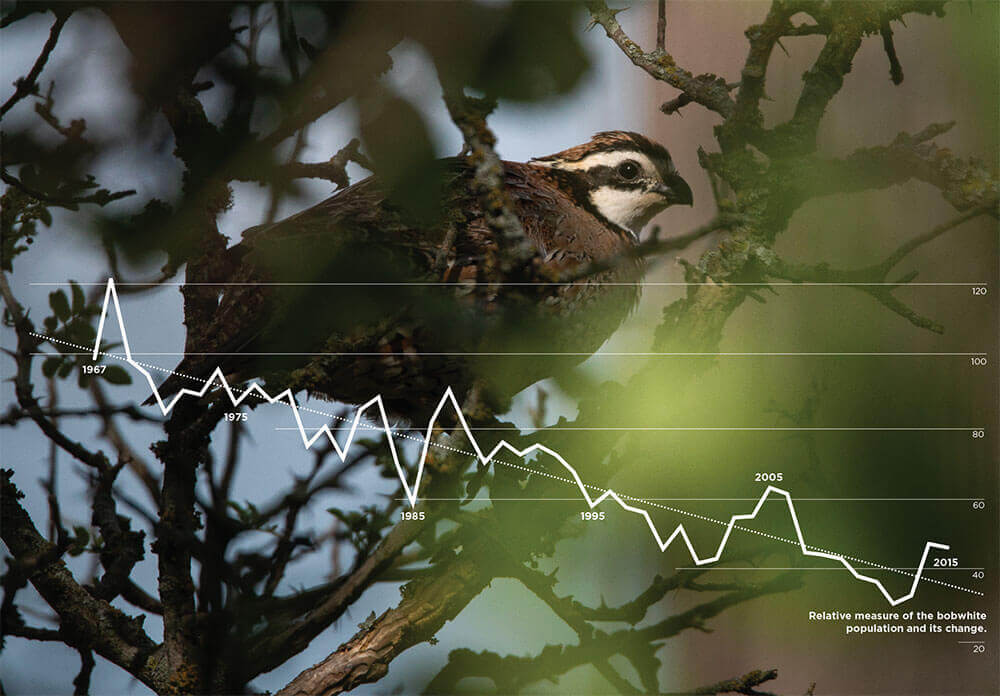
There are a number of factors that have led to the decline: overgrazing, woody plant encroachment (primarily trees), introduction of exotic grasses, variable weather, herbicide/pesticide use, disease, predation and the list goes on. However, loss of habitat is the driving factor behind the decline. In addition to habitat loss, habitat fragmentation and degradation also play roles.
Although a general decline in bobwhite populations is evident, bobwhite also exhibit good and bad years. The cycle of these years is known as the “boom and bust” cycle. Population productivity is tied to weather patterns, especially rainfall in the western portion of the bobwhite’s range. Rainfall produces greater forage and insect abundance as well as the necessary vegetation requirements to increase survival and reproduction.
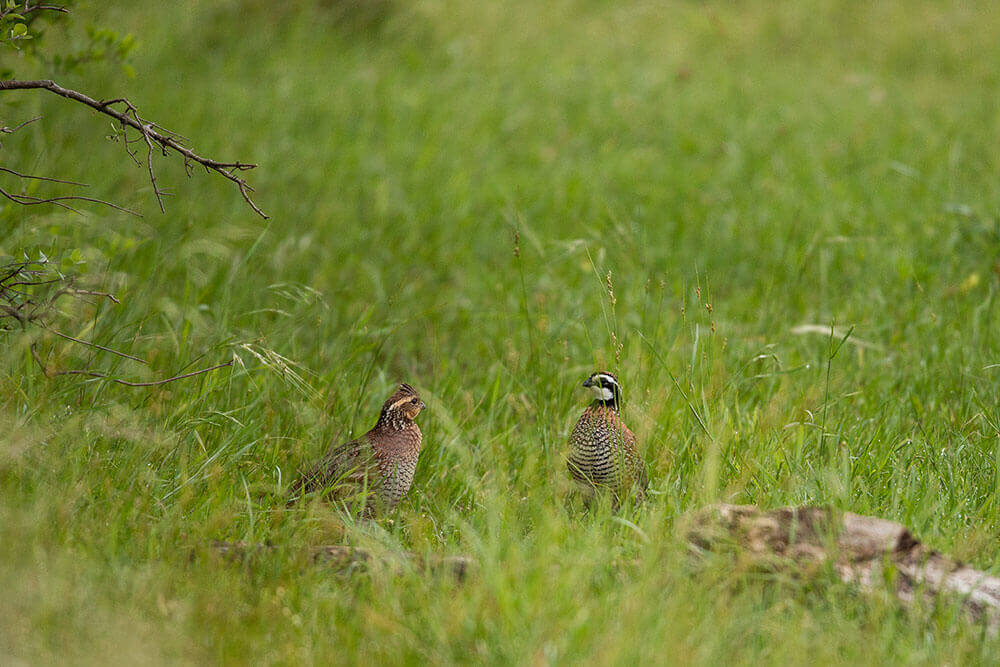
What Bobwhite Need to Survive
Just like any species, bobwhite need food, cover, water and space to meet seasonal habitat requirements. Oklahoma and Texas consist primarily of native rangeland containing grasslands, brushland or remnants. Grasslands are particularly important as feeding, nesting and brood-rearing habitat. Woody cover, mainly as shrubs or brush, is also required and used for whistling posts, loafing cover, thermal cover and escape cover. Bobwhite have predators that attack from the air and the ground, so a certain level of woody vegetation is needed to provide overhead cover and screening cover. A number of estimates exist on the amount of woody cover required. Estimates of as little as 5% have been reported, but estimates of 30% also are reported, with the average falling between 15 to 25%.
Studying Habitat in Relation to Bobwhite Population
From 2008 to 2018, Noble Research Institute conducted spring whistle counts for bobwhite at 13 survey sites on the Oswalt Ranch in Love County, Oklahoma. Using these data, we are able to look at trends in populations as they relate to environmental conditions or factors, such as encroachment of woody species. We used data from the Rangeland Analysis Platform (see “Track Annual Changes in Range Vegetation With Online Tool”) to assess how changes in shrub and tree cover affect bobwhite populations.
Mapping shrub and tree cover shows that these classes of woody cover have increased approximately 1.7% per year across the ranch during the course of the study. Considering the woody cover needs of bobwhite, mainly dense, low growing (less than 6 feet) shrubs, we expect bobwhite populations to respond favorably to shrub cover when within the recommended range. However, trees offer little habitat for quail, so greater tree cover will negatively affect bobwhite populations.
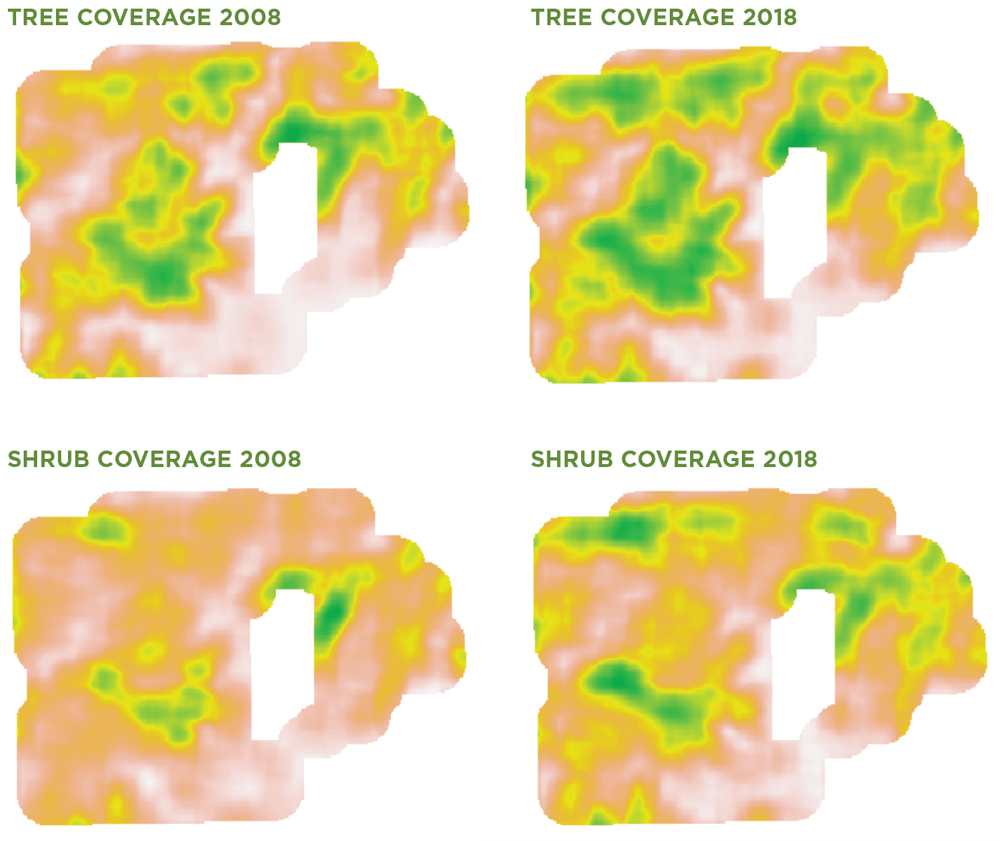
Help Oklahoma Gather Important Information About Game Birds
Wildlife biologists at Oklahoma State University developed a mobile app (available for iPhone and Android users) to collect data on common game birds in Oklahoma. The species of interest include: scaled (blue) quail, prairie chicken, bobwhite quail, ring-necked pheasant and wild turkey. The goal of the app is to collect data that can be used by the Oklahoma Department of Wildlife Conservation to estimate annual reproduction, an important aspect of healthy game bird populations. Users enter the number of adult birds observed along with the number of chicks or poults, the county of observation, date, and any notes or comments about the observation. Data can be entered at any time during the year but is most critical during the reproductive season, which falls between April and October.
For more information about the app, go to: bit.ly/ok-state-bird-app
Trends Observed In Northern Bobwhite Research
1. Grazing cattle is compatible with quail management and when done properly, benefits rangeland health and creates habitat for quail.
For example, cattle disturb the soil, which can increase bare ground and promote forb production. Bobwhite spend much of their time on the ground, so they require some bare ground to ease their movement. This is especially important for chicks. Greater forb production then provides seeds and attracts insects as sources of food. However, proper stocking rate is key.
2. The abundance of bobwhite was lower at sites with greater tree cover.
Average tree cover at sites was 29% in 2008, ranging from 9.7-43.8%. Also as expected, bobwhite abundance was greater at sites where shrub cover was greater, which averaged 5.5% in 2008. The average shrub cover at our survey sites is within the recommended range for shrub cover (5-30%), even after shrub cover increased through 2018.
3. Warm weather makes a difference.
We also found that calling activity of male bobwhites was greater on warmer days, so whistle counts may be more informative about the presence of bobwhite when surveyed at warmer times during the morning from sunrise through mid-morning. And, like most bobwhite populations, there is a lot of variability in abundance from year to year and from site to site (Figure 4).
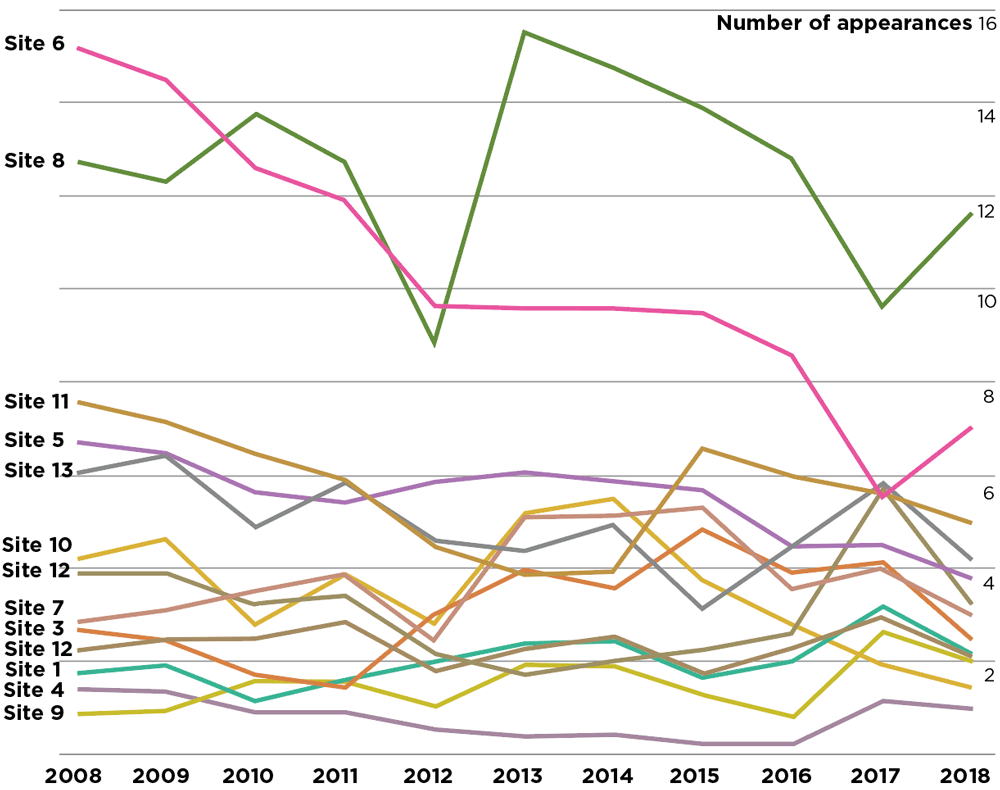
4. Precipitation preceding the whistle count from October to March influenced whether bobwhite used particular sites or not.
As precipitation increased during the cool season, quail were less likely to be found at most of the survey sites. Bobwhite may not be found on particular sites after greater cool-season precipitation because most forage production is dominated by three types: native Texas wintergrass as well as non-native bromes and goatgrass. These species can comprise up to 85% of the biomass prior to the start of surveys on some sites. As these species increase, often as a result of improper grazing management, bobwhite have a more difficult time moving through these areas, which may cause a reduction in the use of these sites.
5. With tree cover increasing in many areas, an affordable and effective management tool to manage woody cover is the use of prescribed fire.
For many reasons other than management of woody species, fire is one of the most effective tools for managing quail habitat. Fire removes excess litter (aiding in movement), stimulates new forage production, and can increase insects and preferred forbs. Most burns are cool-season burns that stimulate perennial forbs. However, growing-season burns (conducted in July through September) may be required when the goal is to reduce woody species. Patch burning is probably more beneficial than other burn types because it creates patches of burned and unburned sites for quail. This creates greater plant diversity and edge habitat.
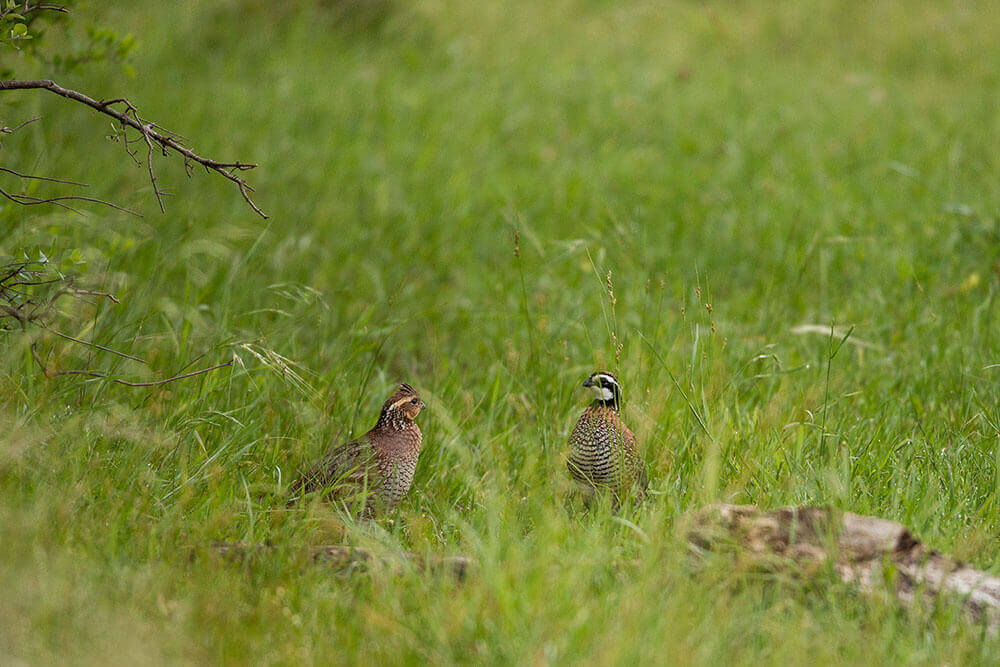
6. Improper use of fire and grazing can be detrimental to quail.
Too little vegetation and too much bare ground doesn’t offer food or security cover. Also, having too little vegetation may interfere with successful prescribed fire management because there is too little fuel to carry a fire. Just like overgrazing can impact quail habitat, so can too much grass. If there is too much grass and litter and not enough bare ground, then quail have a difficult time moving about.
7. Too much of any one thing is not a good thing, especially for quail.
Too much litter, too much woody cover, too much grazing or too much bare ground limit habitats that quail need to survive and reproduce.

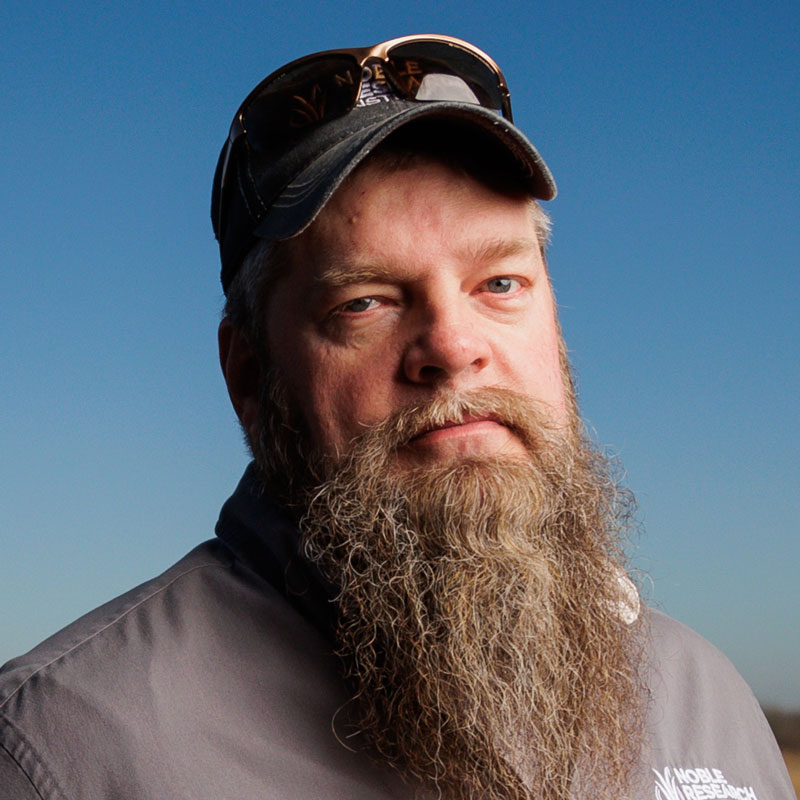
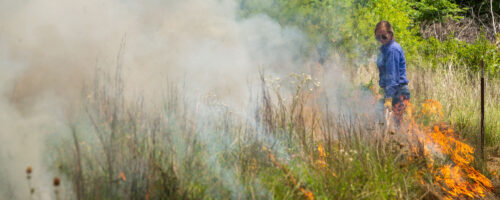
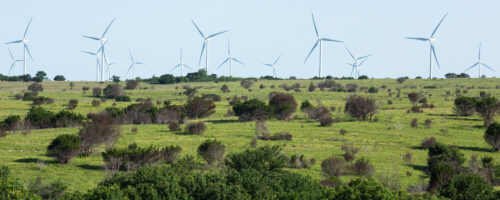
Comment